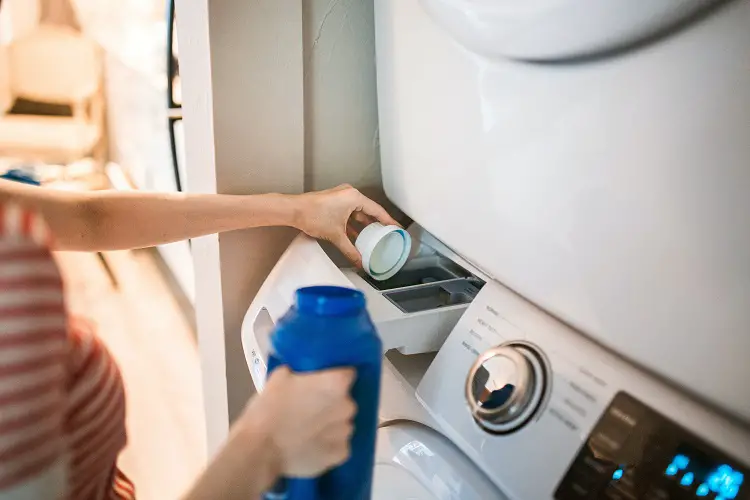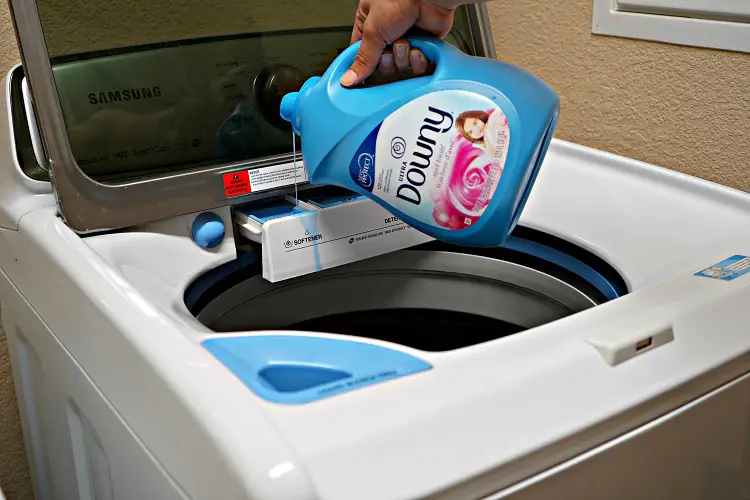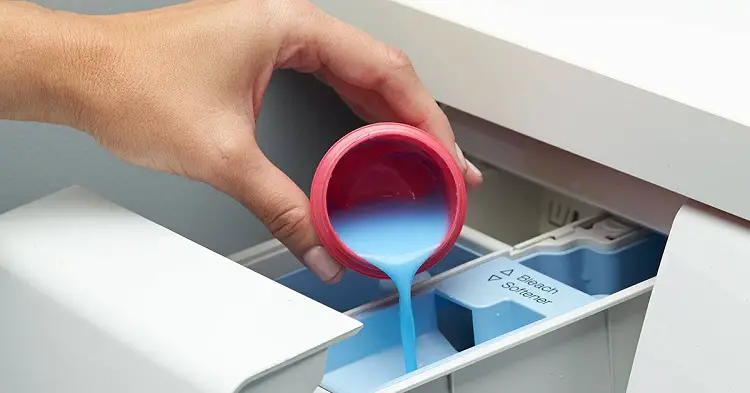Are you in love with fabric softeners? Are you thinking about replacing your laundry detergent with a fabric softener but you’re not sure if it will give you the same result as a detergent would?
Well, if you’re on this boat, don’t worry. In this article, we answer your question can I use fabric softener as detergent? Differences between a fabric softener and a detergent along with other laundry-related questions.
Differences Between A Detergent And A Fabric Softener
Normally we do a lot of dirty work with our clothes, on every daily activity our clothes tend to pick up skin cells, food particles, dirt, hair, and of course sweat.
Laundry detergent is formulated with the ability to remove all this—and its action can be likened to that of the shampoo you use in cleaning your hair.
When you talk about cleaning the clothes the laundry detergent does it best because of its formulation, whereas the fabric softener protects your clothes just as conditioner protects your hair.
The fabric softeners achieve this by strengthening the fabrics and reducing friction during the laundry process. Clothes treated with softeners tend to retain their original shape, and color fading is reduced, as well as pilling and fuzz.
Both detergent and fabric softeners play an important but different role in the laundry process.
Detergent is made from chemicals and enzymes that eliminate dirt, buildup, and bacteria from fabrics.
Its formulation is prepared to be able to remove stains from textiles and preserve the color of your fabric over time. The main ingredients in laundry detergent are:
- Alkalis: These are a unique form of dissolvable salt and a base compound that reacts with it (mainly used to remove stains and dirt).
- Sulfates or alcohol compounds are surfactants that prevent dirt build-up in water from re-attaching to your clothes.
- Catalytic Enzymes: They target a particular kind of dirt and break it down.
- pH modifiers, water conditioners, and preservatives: They help to prevent hard-water damage to textiles.
Fabric softeners, often referred to as fabric conditioners, function in laundry processes by protecting clothing through their strengthening effects on the fabric fibers, thereby reducing friction during the washing process.
The main ingredients found in fabric softeners include:
- Conditioning agents help prevent static and create the “slippery” barrier that gives your fabric its softness.
- Emulsifiers – for the production of oils in the water-soluble product.
- Preservatives – helps to stabilize the formula.
- Fragrances– there are a lot of fragrance-free options as well.
Frankly speaking, fabric softener isn’t a necessity for effective laundering, but its usage is encouraged because of its ability to extend the lifetime of clothing.
It also makes the fabric smoother with a nice smell than it would have been if not used during the laundry process.
Can I Use Fabric Softener As Detergent During Laundry?

The answer to this question is no; fabric softeners can never and should never be used as an alternative to laundry detergent.
Fabric softener does not contain cleaning agents such as the enzymes and alkalis found in detergents that help remove dirt and stains.
However, using only fabric softeners during laundry will not damage your clothes, but it won’t clean your clothes as a detergent would.
Whenever you run out of detergent during laundry, try to improvise by washing your clothing with your hands until you can get more.
Using fabric softeners in the laundry without detergent will leave dirty clothes with a softer feel and fragrance.
Another good option is to use baking soda or borax in the washer, effectively removing dirt and stains from fabrics.
Never use dishwashing liquid, hair shampoo, or conditioner as alternatives to detergent when washing your fabrics.
You will regret the outcome because they will wreak havoc on your clothes and can severely damage or destroy your washing machine.
Read Also: Best Fabric Softeners For Babies With Sensitive Skin
What Can I Do If I Mistakenly Use Fabric Softener Instead Of Laundry Detergent?
Mixing up your laundry detergent and fabric softener is normal since the two are usually packaged in a similar size and color.
If you mistakenly put fabric softener in the detergent dispenser when doing your laundry, don’t panic — it won’t damage your fabric or washing machine.
You should only be concerned with the fabric softener, the water you wasted, and the unproductive time wasted.
All you have to do is re-wash your clothes and ensure the detergent is added to its proper place.
When To And Not To Use A Fabric Softener

Softener formulation is formed just for use on cotton and linen fabrics, and it’s usually an honest idea to use softener when handling fabrics made from these materials.
There are, however, a few situations when fabric softeners should be avoided.
Don’t use fabric softener when:
- Washing microfiber towels.
- Cleaning moisture-wicking garments (Like those often used in athletic wear).
- Washing baby clothes (fabric softeners could damage the fire-resistant qualities usually included in producing these materials).
- Fluffy fabrics like fleece, velour, and terry cloth.
- Washing towels, alternate loads with and without fabric softener (fabric softener tends to reduce absorption).
- Applying products directly to garments will leave an oily stain.
How To Properly Use Laundry Detergent And Fabric Softener
The separate labeled compartment on modern washing machines makes it easier to use detergent and fabric so all you have to do is to fill the correct compartment with its respective product.
Confirm the compartment labels to ensure that the detergent and softener release at the right time. The detergent should release during the wash cycle, while the softener will release during the final rinse.
If you are using older machines that require the manual addition of laundry products, begin with the detergent. During the final rinse cycle, stop the load and add the fabric softener before continuing.
Alternatively, you can use a fabric softener ball, like the Downy Ball. When using this product, you must fill the ball with a fabric softener and place it in the washing machine with the load.
The spinning mechanism during the rinse cycle causes the ball to release the fabric softener gently, so you don’t need to stop your washer at any point.
If you’re hand washing, first wash the fabric with clean water and laundry detergent like Oxiclean. After you’ve rinsed the detergent away, add fresh water and a small amount of softener before a final rinse.
Again, ensure you read the product labels and follow the instructions on the packaging to avoid damaging your clothes.
Read Also: How To Use Fabric Stiffeners
Laundry Detergent and Fabric Softener Mix
If you want your fabrics clean and smell nice but don’t want to buy separate products, there are a lot of laundry detergents that include fabric softeners in their formulation.
Some detergents are Tide Plus Downy and Arm & Hammer Plus Softener. During laundry, pour these formulas into the detergent compartment or the washing machine drum, then leave it to launder.
Be mindful that just because these laundry detergents exist doesn’t mean you should try to create your own.
Tide, Arm & Hammer, and other companies have specially designed these products so that the active cleaning ingredients act first, and the strengthening and softening ingredients kick in after.
Therefore, simply mixing the laundry detergent and softener on your own will make the softener rinse out with the detergent during the first rinse cycle, and you won’t enjoy the benefit from the softener.
Related Posts:
- How To Whiten Baby Clothes Without Bleach
- How To Wash Baby Clothes (Do’s & Don’t)
- Best Stain Remover For Baby Poop 2021
Wind Up
I hope this article has provided you with the answer to your question can I use fabric softener as detergent.
As mentioned earlier, fabric softeners and laundry detergents are usually packaged similarly and sold together. However, they serve different functions.
Detergents are formulated to thoroughly clean clothes by removing dirt, oils, buildup, and stains, while fabric softeners reinforce and protect your clothes during washing.
If you run out of detergent during laundry sessions, washing your clothes or using effective alternatives like baking soda or borax will pay off more than softeners.
Also, accidental use of fabric softener in place of laundry detergent won’t damage your clothes or washing machine, but it won’t erase the dirt on your clothes. Just rewash your load of laundry using the right products.
